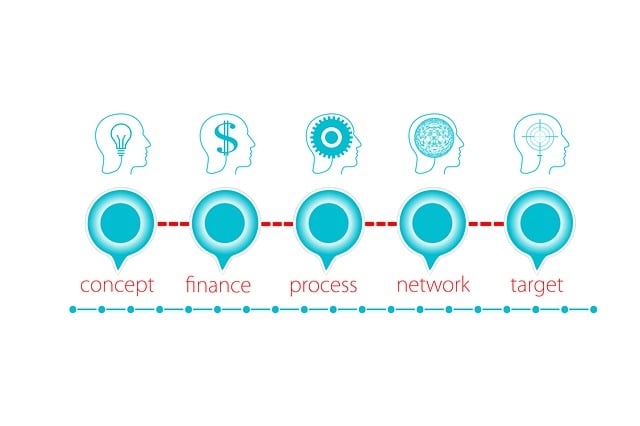Semaglutide, a groundbreaking GLP-1 receptor agonist, transforms diabetes management with its unique mechanism mimicking natural hormones. Offering effective blood sugar control and weight loss benefits, it revolutionizes treatment for type 2 diabetics through flexible, personalized semaglutide treatment plans. Advanced dosing regimens, tailored based on individual needs, enhance treatment adherence and outcomes. Beyond diabetes, semaglutide shows promise in obesity, NASH, and cardiovascular diseases. Ongoing research aims to expand its applications, refine dosing, and improve administration methods for better patient experiences and global health impact.
Semaglutide, a groundbreaking glucagon-like peptide receptor agonist (GLP-1 RA), has transformed diabetes management. Its ability to lower blood sugar levels and promote weight loss has sparked interest in diverse therapeutic approaches. This article explores the evolving landscape of semaglutide treatment plans, delving into its mechanisms, personalized dosing, expanded roles in weight management, clinical efficacy, innovative administration methods, patient compliance strategies, and promising future directions. Unlock the potential of semaglutide as a game-changer in diabetes and beyond.
Unlocking the Potential: Semaglutide's Rise in Diabetes Management

Semaglutide, a groundbreaking medication, has emerged as a powerful tool in diabetes management, transforming treatment plans and improving patient lives. Its rise is attributed to its unique ability to mimic natural hormones, thereby regulating blood sugar levels effectively. This innovative approach offers a promising alternative to traditional insulin therapy, especially for individuals with type 2 diabetes.
The potential of semaglutide was first recognized in the context of weight management, where it demonstrated remarkable results in aiding weight loss. However, its benefits extend far beyond this application. By stimulating insulin release and slowing glucagon production, semaglutide helps lower blood glucose levels, reduces the risk of diabetes-related complications, and provides a more stable energy source. As a result, healthcare professionals are increasingly incorporating semaglutide into personalized treatment plans, offering hope for improved glycemic control and enhanced quality of life for diabetic patients.
Understanding Semaglutide: A Glucagon-Like Peptide Receptor Agonist

Semaglutide is a groundbreaking medication that has transformed diabetes management, offering innovative solutions through its unique mechanism of action. As a glucagon-like peptide-1 (GLP-1) receptor agonist, it mimics the effects of the natural hormone GLP-1, which plays a crucial role in regulating blood sugar levels. By activating these receptors, semaglutide stimulates insulin secretion in a glucose-dependent manner, helping to lower blood sugar. This targeted approach is particularly beneficial for individuals with type 2 diabetes who often struggle with inconsistent insulin responses.
The versatility of semaglutide treatment plans lies in their ability to be tailored to individual patient needs. Whether as a monotherapy or in combination with other medications, it provides effective blood sugar control. Furthermore, its once-weekly administration makes it highly convenient for patients, offering a significant improvement over daily injections. This advancement not only enhances adherence to treatment but also promises to revolutionize diabetes care by simplifying semaglutide treatment plans and improving overall patient experiences.
Personalized Treatment: Tailoring Semaglutide Dosing for Optimal Results

Personalized treatment approaches are transforming the way semaglutide is administered, ensuring optimal results for each patient. By tailoring dosing regimens based on individual characteristics, healthcare providers can maximize the benefits of semaglutide treatment plans. This involves considering factors such as weight, blood glucose levels, and overall health to determine the most effective dose. Personalized dosing allows for a more precise management of diabetes and weight management conditions, potentially leading to better patient outcomes.
Advanced algorithms and predictive models aid in these decisions, suggesting customized semaglutide doses that minimize side effects while achieving desired therapeutic goals. This individualized approach promises enhanced efficacy, improved adherence to treatment plans, and ultimately, better quality of life for patients engaging in semaglutide therapy.
Beyond Insulin: Exploring Semaglutide's Role in Weight Management

Semaglutide, initially known for its insulin-like properties, has emerged as a groundbreaking option in weight management beyond traditional insulin therapy. Its role in semaglutide treatment plans extends far beyond glucose regulation, making it a game-changer in the field of bariatric care. By mimicking natural hormones, semaglutide not only aids in reducing blood sugar levels but also stimulates feelings of fullness, leading to decreased appetite and subsequent weight loss.
This dual action mechanism offers a novel approach to addressing obesity and its associated health risks. The medication has shown remarkable effectiveness in helping individuals achieve significant weight loss goals when incorporated into comprehensive treatment plans. Additionally, semaglutide’s ability to improve metabolic parameters positions it as a promising tool for managing type 2 diabetes while concurrently supporting long-term weight management.
Clinical Trials and Real-World Data: Evaluating Semaglutide's Efficacy and Safety

Clinical trials play a pivotal role in understanding and evaluating the efficacy and safety of semaglutide treatment plans. These rigorously controlled studies involve patient populations who meet specific criteria, allowing researchers to assess the drug’s impact on various health outcomes. By comparing treatment groups with placebo or standard care, clinical trials provide robust evidence for regulatory approval and guide healthcare professionals’ prescribing practices.
Complementing clinical trial data, real-world studies utilizing large datasets offer valuable insights into semaglutide’s performance in diverse patient scenarios. This approach captures the drug’s effectiveness in everyday clinical settings, considering variations in patient demographics, comorbidities, and treatment durations. Real-world data help identify rare adverse events and long-term effects, ensuring a comprehensive understanding of semaglutide’s safety profile as it is implemented across different healthcare systems.
Administration Methods: From Injections to Innovative Delivery Systems

The administration method of semaglutide treatment has evolved significantly, transforming from traditional injections to more innovative delivery systems. Initially, patients required regular injections to receive this medication, which could impact adherence due to the need for frequent medical visits and potential injection site reactions. However, advancements in pharmaceutical technology have led to alternative methods, such as once-weekly or even once-monthly injectables, improving patient convenience and compliance with semaglutide treatment plans.
Furthermore, researchers are exploring other delivery routes like oral formulations and nasal sprays. Oral semaglutide, if approved, would offer a more traditional medication experience for patients. Similarly, nasal delivery systems could provide rapid absorption and ease of administration, potentially expanding accessibility and patient acceptance of semaglutide treatment options. These innovations aim to enhance patient comfort while maintaining the efficacy and safety profile associated with semaglutide therapy.
Patient Compliance and Education: Ensuring Effective Semaglutide Therapy

Patient compliance and education are vital aspects in ensuring effective semaglutide therapy. As with any medication, patients must understand how to correctly administer the drug, whether it’s through injection or another method. This includes knowledge about timing, frequency, and proper storage. Healthcare providers play a crucial role in educating patients, answering questions, and addressing concerns. Regular follow-up appointments can help maintain patient compliance by providing ongoing support and guidance.
Additionally, semaglutide treatment plans should be tailored to individual patient needs and preferences. This personalized approach fosters better adherence to the therapy regimen. By empowering patients with knowledge and offering continuous support, healthcare professionals can enhance the overall effectiveness of semaglutide treatments, leading to improved health outcomes.
Future Perspectives: Expanding Applications and Research Directions

The future of semaglutide treatment looks promising, with expanding applications and ongoing research opening new avenues for this versatile therapy. As our understanding of semaglutide’s mechanisms deepens, we can expect to see its use extend beyond diabetes management, potentially treating a wider range of metabolic disorders. Ongoing clinical trials are exploring the efficacy of semaglutide in managing obesity, non-alcoholic steatohepatitis (NASH), and even cardiovascular diseases. These studies aim to refine treatment plans, optimize dosing, and identify specific patient populations that may benefit most from this drug.
Research directions include investigating the long-term effects of semaglutide, exploring combination therapies with other metabolic agents, and developing user-friendly administration methods. The goal is to enhance patient adherence and compliance while maximizing therapeutic benefits. By delving into these areas, scientists aim to revolutionize diabetes care and related metabolic conditions, potentially improving quality of life for millions of individuals worldwide through personalized semaglutide treatment plans.
